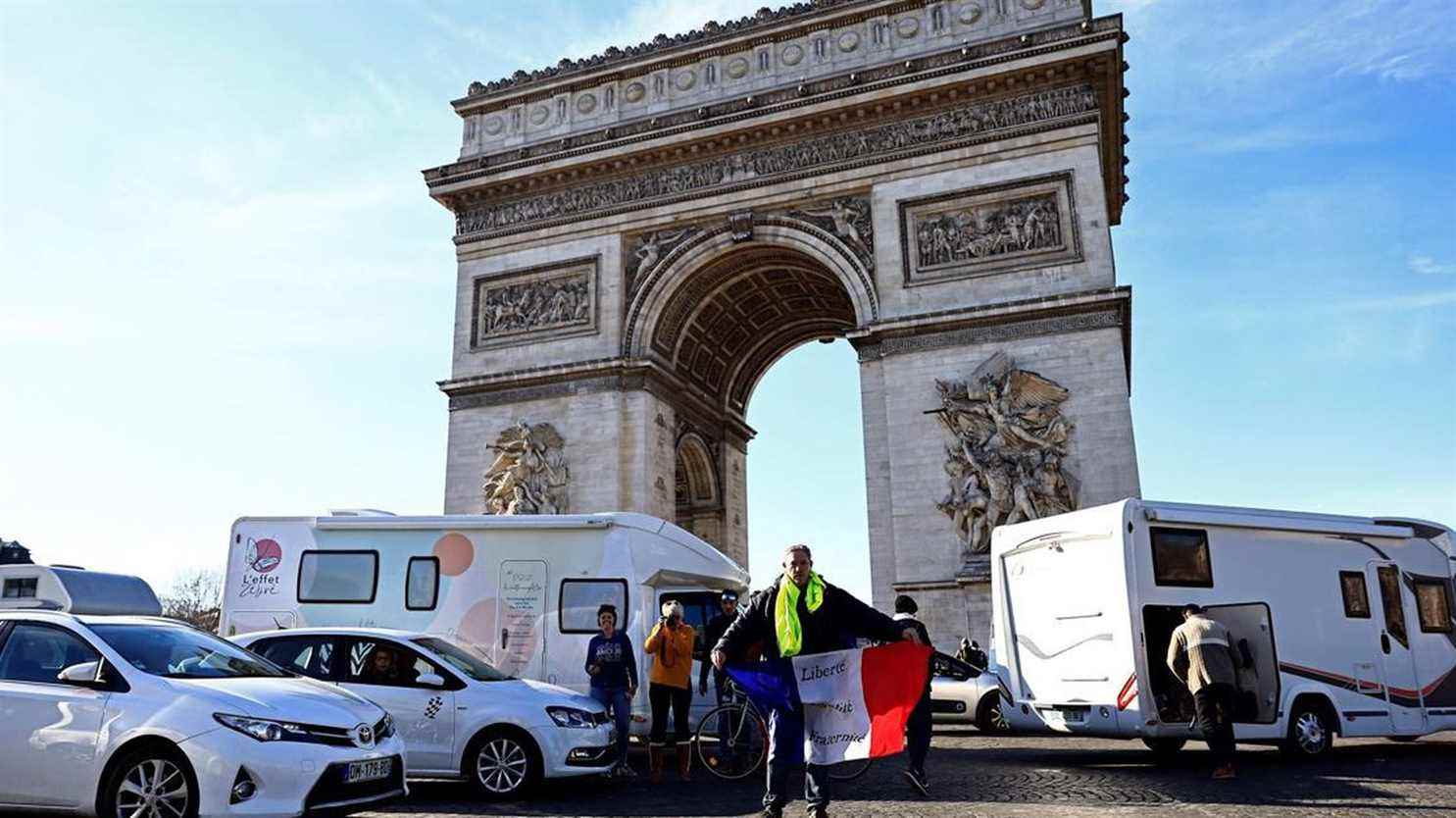This is a key question: who are they and what are their demands? The various “freedom convoys” from all over France converged on Saturday February 12 around the Arc de Triomphe in Paris, despite the ban on demonstrations by the police headquarters, which deployed 7,200 police and gendarmes.
>> LIVE. “Freedom convoy”: 337 people fined and 14 arrested in Paris
Several dozen cars, motorhomes and motorcycles disrupted traffic in the early afternoon on the Place de l’Etoile. The police headquarters called in tow trucks in the Champs-Élysées sector in Paris, “to identify the offense of obstruction, remove interfering vehicles, verbalize and arrest offenders“, stating that “no blocking will be tolerated“.
On franceinfo, Stéphane Sirot, historian, specialist in strikes and trade unionism, gave some details on the profile of the demonstrators who participate in the self-proclaimed “freedom convoys”, noting a great “sociological and generational” diversity.
franceinfo: Do these demonstrations have anything in common with those of the “yellow vests”?
Stephane Sirot : IThere are elements that are comparable. The triggering of these movements which have been formed on social networks, insofar as no political or trade union organization has called for participation in these demonstrations. We don’t have large organizations calling for participation in these demonstrations at the national level. Locally, for example, we can have departmental unions of trade unions like those of the CGT, for example, which can on the other hand call for support for these demonstrations. There is also the choice of Saturday, which is quite comparable and which is not usual in social movements. As a general rule, the tradition was rather demonstrations during the week. Since then, the Yellow Vests have settled in a way the Saturday demonstration. It will bring people together beyond the world of work, bring everyone together, including families. And then, of course, the political and ideological mosaic, a diversity of demonstrators, a diversity from every point of view, sociological and generational.
Is there a typical robot portrait of the protester?
There are nevertheless a certain number of common elements which can sometimes be a little surprising. We have rather demonstrators who are fairly qualified and who belong, for a certain number of them, to what is commonly called the middle classes. When we look in particular at their relationship with politicians, these are people who, either, abstain a lot in elections, which is the case more and more of French people, and have such a marked tendency to vote blank, which which basically shows a kind of disaffiliation vis-à-vis anything resembling institutions, especially politicians.
Is it an anti-government movement, against Macron?
Anti-Macron too. Those who participate in these demonstrations have, for very few of them in 2017, voted for Emmanuel Macron. Indeed, it is rather demonstrators who are very critical of this government, of Emmanuel Macron and his personality, very critical of the political field. They find it very difficult to grant legitimacy to policies they no longer want, to parties that no longer correspond to their expectations. It is clear that it is extremely difficult, in this context, to stop these demonstrations and to convince those who participate in them to return home.
Abstentionist, “middle class” and anti-Macron: a historian paints a composite portrait of the participants in the “freedom convoy” pic.twitter.com/huIaP7xt7T
— franceinfo (@franceinfo) February 12, 2022
